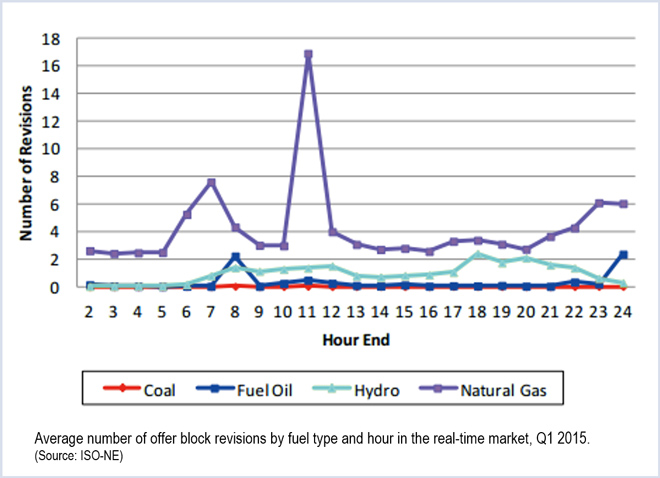By William Opalka
ISO-NE’s power prices dropped by more than 40% in the first quarter of 2015 thanks to lower natural gas costs, the Internal Market Monitor reported last week.
In a filing with the Federal Energy Regulatory Commission, the Monitor said a 43% decrease in the cost of natural gas from the previous year was largely responsible for the power price decline (ZZ15-4). Natural gas prices averaged $11.37/MMBtu, a drop from $19.95.
Day-ahead energy market prices averaged $84.84/MWh at the Massachusetts hub, down 41% from a year ago, while real-time prices averaged $81.97/MWh, a drop of 43%.
Also lower were real-time reserve payments (-80%), regulation payments (-56%) and net commitment period compensation payments (-67%).
Total wholesale market costs of $3.14 billion were down 41%. “Overall, market prices reflected the cost of providing energy, and energy market outcomes were competitive,” the Monitor said.
Pricing Flexibility
The IMM said generators are taking advantage of the flexibility resulting from the RTO’s Dec. 3 rule change allowing market offers to be made hourly and changed during the operating day. The energy market offer flexibility (EMOF) rule, which allows resources to respond to changes in production and opportunity costs, has been used primarily by natural gas generators.
“There has been a reduction in the volume of self-scheduling, in which generators assume a price-taking role, and to the extent to which generators vary economic minimum parameters to reach desired levels of output,” the Monitor said.
Some generators also took advantage of EMOF rules allowing them to offer negative prices to signal their desire to maintain minimum output levels.
Only hydro and wind resources offered negative prices in the day-ahead market. They were joined by some natural gas, biomass and coal resources in offering negative prices in the real-time market.
“On average, the amount of capacity offered in the real-time market at negative prices was equal to roughly 3% to 4% of load,” the Monitor said.


